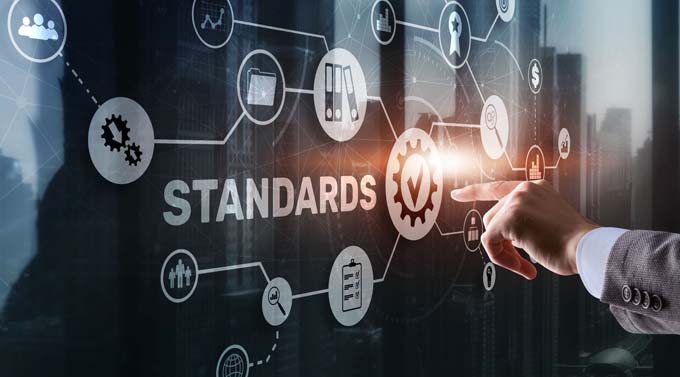On World Standards Day 2022: Standards are here to stay
Standards are barely visible, but they are everywhere. World Standards Day 2022 on October 14 will mark the seventy-fifth anniversary of the founding of the International Organization for Standardization ISO. Switzerland has been a member since the beginning and continues to have a strong voice in this organization today.

Urs Fischer, CEO of the Swiss Standards Association (SNV), knows that Switzerland has a weighty voice in the standards process in international committees. And not only in the classic topics such as ski bindings, ropeways or mechanical engineering, but also in areas such as leadership principles or management topics. In many areas, it is possible for Swiss experts to participate in standards committees. The Swiss Standards Association (SNV) actively calls for participation in relevant professional groups. The idea is that people with relevant experience define practicable standards, review them and later adapt them if necessary. The Swiss Association for Standardization (SNV) is responsible for managing the development and review processes. It is the hub and provides the link to the international committees.
Standards are not laws
Applied standards are hidden in buildings and infrastructures as well as in almost every product. But what for? Standards enable more efficient production, handling and storage. They lead to better compatibility in technical devices and systems. They also create consumer confidence. After all, applied standards also mean that basic requirements with regard to health, safety and the environment are met. Since standards are reviewed every five years and revised if necessary, they remain up to date. New areas or topics are integrated. For example, adaptations due to digitalization or the forward-looking inclusion of climate change. Trend topics such as blockchain or megacities are included. Social developments such as demographic changes or sustainability issues are integrated into the standards. Overall, standards are widely accepted because they arise from practice and are created for practice. In some cases, however, standards are also referred to in laws. This means that in these cases, standards take on a legally binding character. In all other cases, compliance with the standards is voluntary. This is because they are created by organizations under private law. However, since these work closely with government organizations, standardization is a good example of a successful public-private partnership (PPP), i.e. cooperation between the public sector and private industry.
What does SN EN ISO 9001:2015 mean?
9001 is the number of the quality management standard, the year after the colon refers to the year of publication of the revised version of the standard. If it is revised again, the year is replaced by the new publication date. Each standard is numbered according to this principle.
ISO stands for International Organization for Standardization. The international association of standardization organizations now represents 165 countries worldwide. The organization is headquartered in Geneva. ISO standards are developed for the global market. Switzerland is a member of this organization and can influence the development of standards via the Swiss Standards Association (SNV).
The abbreviation EN means that it is a standard developed for the European area. In the case of EN ISO 9001, this means that the international standard has been adopted into the body of standards of the EU. The abbreviation SN means that a standard has been developed for the Swiss market. SN EN ISO 9001 accordingly means that the international and European standard for quality management has also been incorporated into the Swiss body of standards. Since Switzerland participates in both European and global standardization, the international or European standards are generally adopted and any conflicting national standards are withdrawn. Special national cases may be mentioned or supplemented in the foreword or annex of the international standards, but the actual content of the standards remains the same everywhere.
The CE marking
The most familiar mark for consumers is probably the CE mark. This was created to identify products that comply with EU legislation. The CE mark is often referred to as a passport to the European single market. With it, a manufacturer testifies that he has taken into account all the specific requirements of EU legislation for the product he sells. Since this, like Swiss legislation, refers to relevant standards, the CE mark also testifies that these have been complied with. In Switzerland, CE marking is not mandatory. However, since the majority of products are also sold on the EU market, it is also widely used in our country.
Anniversary on World Standards Day 2022

Before seventy five years delegates from 25 countries decided in London to create an international organization for standardization. This marked the beginning of worldwide standardization. The purpose of the young organization was to facilitate the coordination and standardization of standards developed by its member organizations. In today's world and modern economy, it is impossible to imagine life without standards; even if they are barely visible to consumers, they operate in the background, and almost everywhere.
Source and further information: Swiss Association for Standardization (SNV)









